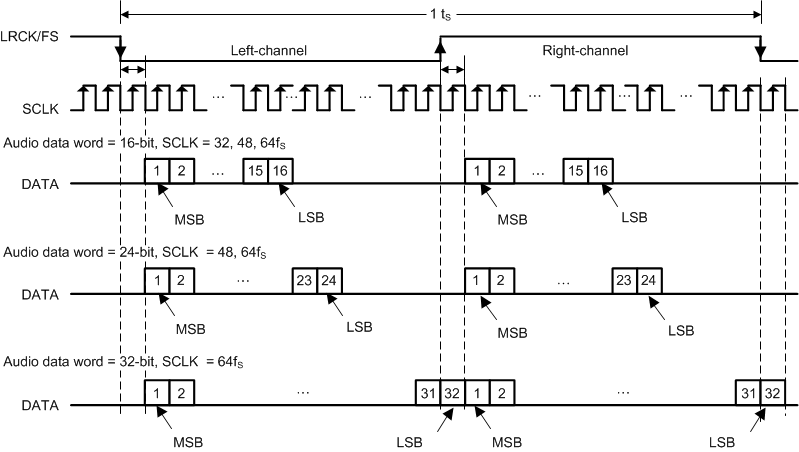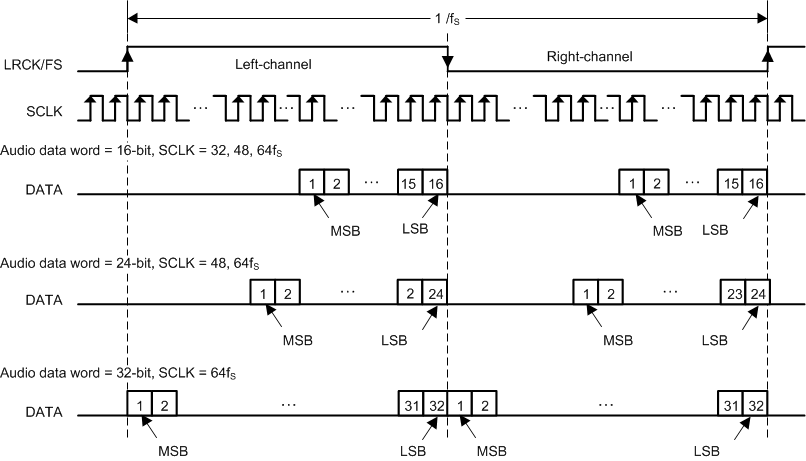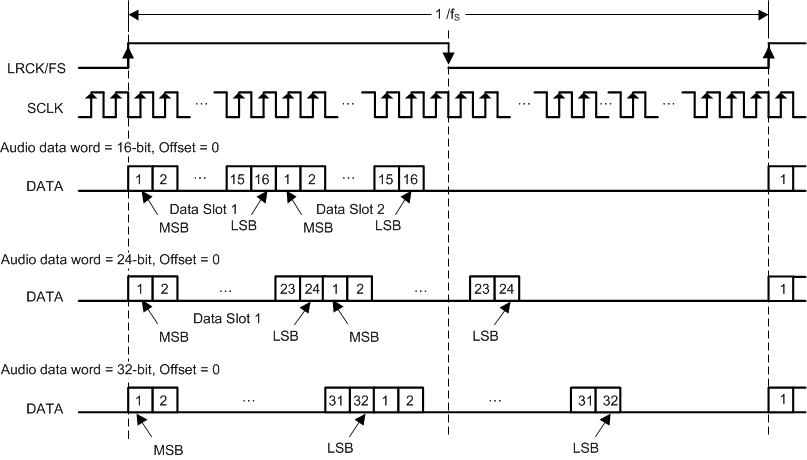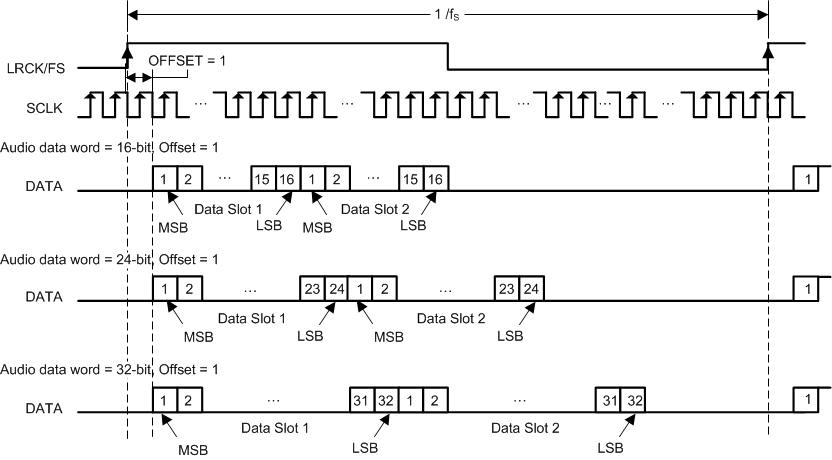SLASEV8 December 2020 TAS5822M
PRODUCTION DATA
- 1 Features
- 2 Applications
- 3 Description
- 4 Revision History
- 5 Pin Configuration and Functions
- 6 Specifications
-
7 Detailed Description
- 7.1 Overview
- 7.2 Functional Block Diagram
- 7.3 Feature Description
- 7.4 Device Functional Modes
- 7.5 Programming and Control
- 7.6 Register Maps
- 8 Application and Implementation
- 9 Power Supply Recommendations
- 10Layout
- 11Device and Documentation Support
- 12Mechanical, Packaging, and Orderable Information
Package Options
Mechanical Data (Package|Pins)
- DCP|38
Thermal pad, mechanical data (Package|Pins)
- DCP|38
Orderable Information
7.3.6 Serial Audio Port - Data Formats and Bit Depths
The device supports industry-standard audio data formats, including standard I2S, left-justified, right-justified and TDM/DSP data. Data formats are selected via Register (Register Address 0x33-D[5:4]). If the high width of LRCLK(FS) in TDM/DSP mode is less than 8 cycles of SCLK(BCLK), the register (Register Address 0x33-D[3:2]) should set to 01. All formats require binary two's complement, MSB-first audio data; up to 32-bit audio data is accepted. All the data formats, word length and clock rate supported by this device are shown in Table 1. The data formats are detailed in Figure 1 through Figure 6. The word length are selected via Register (Register Address 0x33-D[1:0]).Default setting is I2S and 24 bit word length.
For TDM Mode, the offsets of data are selected via Register (Register Address 0x33-D[7-6]) and Register (Register Address 0x34-D[7:0]).
| LRCLK(FS) | TDM Slots | Notes | ||
|---|---|---|---|---|
| 48kHz | 16 | Each Slots's position (offset) can be set by Register 51 (Register address 0x33) and Register 52 (Register address 0x34). | ||
| 96kHz | 8 | |||
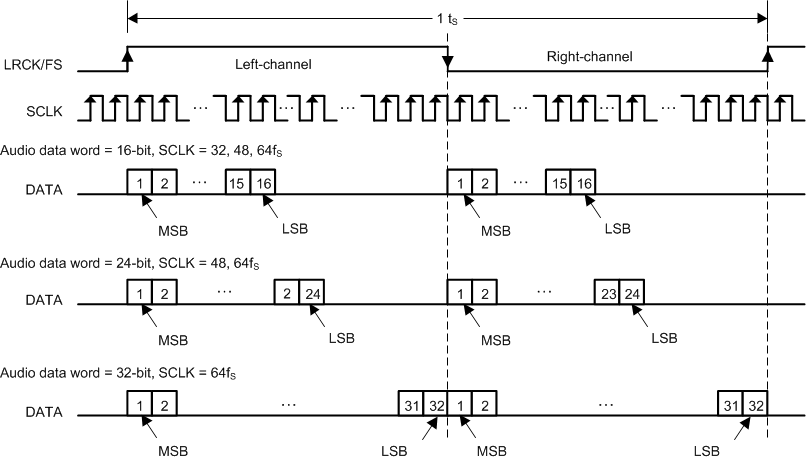 Figure 7-2 Left Justified Audio Data Format
Figure 7-2 Left Justified Audio Data Format